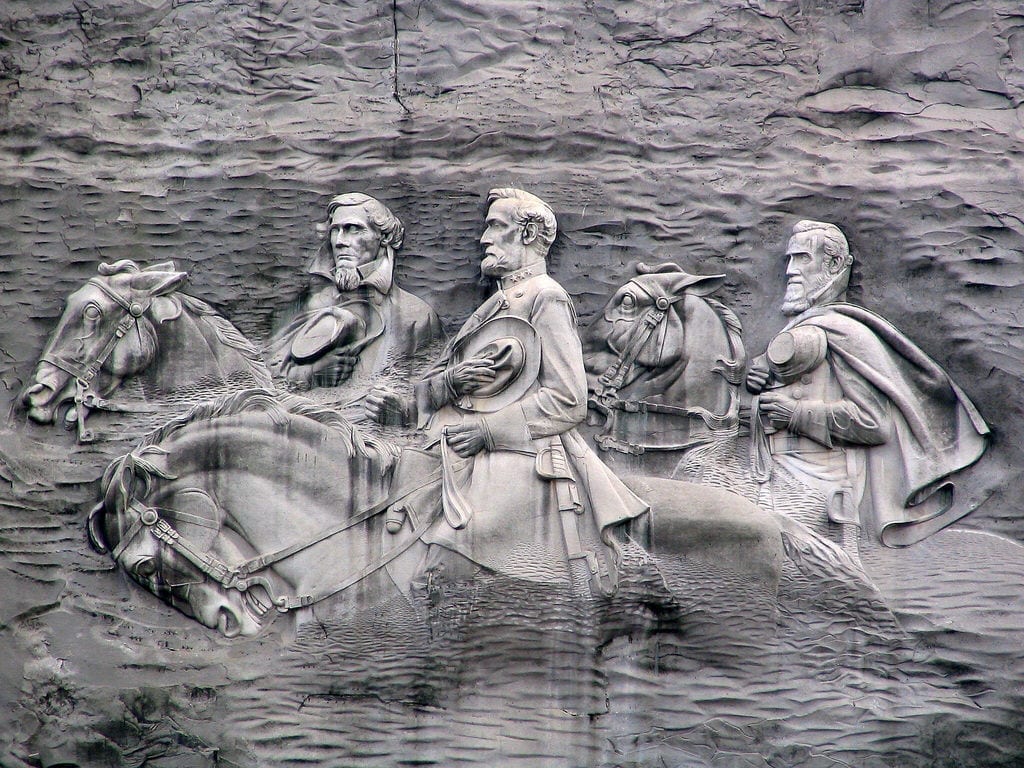In the wake of Charlottesville, mayors, city councils, and citizens’ groups have set about removing Confederate monuments from their towns. From Annapolis to Austin, from Washington State to Washington D.C., parks and courthouses are being relieved of their tributes to our secessionist past. But will this newfound passion for picking up our national litter really make a difference going forward? It’s hard to tell.
In the wake of Charlottesville, mayors, city councils, and citizens’ groups have set about removing Confederate monuments from their towns. From Annapolis to Austin, from Washington State to Washington D.C., parks and courthouses are being relieved of their tributes to our secessionist past. But will this newfound passion for picking up our national litter really make a difference going forward? It’s hard to tell.
The proximate cause of the Charlottesville unrest was the proposed removal of the Robert E. Lee monument from nearby Emancipation Park. Back in 2012, without any trigger warning whatsoever, Charlottesville city councilwoman Kristin Szakos suggested that the city consider removing its Confederate monuments, including statues of Lee and General Thomas J. “Stonewall” Jackson. Coming a month after the death of Trayvon Martin, Szakos’ suggestion drew heated criticism and threats. This turning point, like the birth of Black Lives Matter and the Dylann Roof shooting, expanded our national conversation around race. It also eventually resulted in people from all around the country, who might be expected to favor the rights of states and localities to decide local matters, to converge upon Charlottesville to let them know they were doing it wrong.
Perhaps ironically, the same Robert E. Lee depicted in Confederate monuments around the country would not have approved of their existence. According to Lee, such tributes “keep open the sores of war” and should be forgotten. Declining an invitation to assist in an effort to memorialize the battle at Gettysburg, Lee wrote in 1869 that he thought it better “to follow the examples of those nations who endeavored to obliterate the marks of civil strife, to commit to oblivion the feelings engendered.”
One of those nations is Germany. Since the Holocaust, Germans have done their level best to put that era of shame in its proper perspective. Making the Nazi salute is illegal, as well as other Nazi symbols and Holocaust denial generally. This doesn’t mean that Germans have “forgotten history” (although their resurgent Right wing seems to want to repeat it), merely that they have decided to learn from their past instead of glorifying the worst parts. Similarly, statues of Lenin and Stalin have fallen throughout former Communist countries. Communism hasn’t been forgotten there. Communities have simply decided to move on.
But “forgetting history” isn’t really the point here, is it? Few who fret about erasing or forgetting our Civil War era seem to be going out of their way to remember the horrors of the Middle Passage or teach children that secession was un-American. In fact, many of these Confederate monuments didn’t exist until decades after the end of the “late Unpleasantness.” Baltimore’s statue of Robert E. Lee and Stonewall Jackson wasn’t erected until 1948. It was more likely a memo to empowered African-American soldiers returning from fighting Nazis in WWII, reminding them not to get all uppity, rather than true affection for the Lost Cause. The same could be said for the multitude of Confederate monuments raised during the Jim Crow and Civil Rights eras.

That it’s coming to a head again now is no accident. Even as cities are pulling their Confederate monuments down, more are going up while the removal of others is stuck in legal limbo. For his part, Mike Pence, who would become President should Trump be removed from office, favors more monuments of any kind. These aren’t the Civil War memorials that Robert E. Lee frowned upon. This is not Germany, which had a history before Hitler. In a time when people are shouting that Black Lives Matter, this is the continued effort, not to remember history, but to make sure others never forget it, and shudder.
So when your Facebook friends post memes about how it’s not flags and monuments that matter, but the hate in peoples’ hearts, they’re partially right. The next question should be about how to stop the hate. That won’t be simple in these interesting times, but melting down these Confederate monuments to Jim Crow may be the best way to show that such sentiments are neither welcomed nor condoned in America. If only, however, that were the case.
Related: The Three Perspectives of the Battle


Join the conversation!